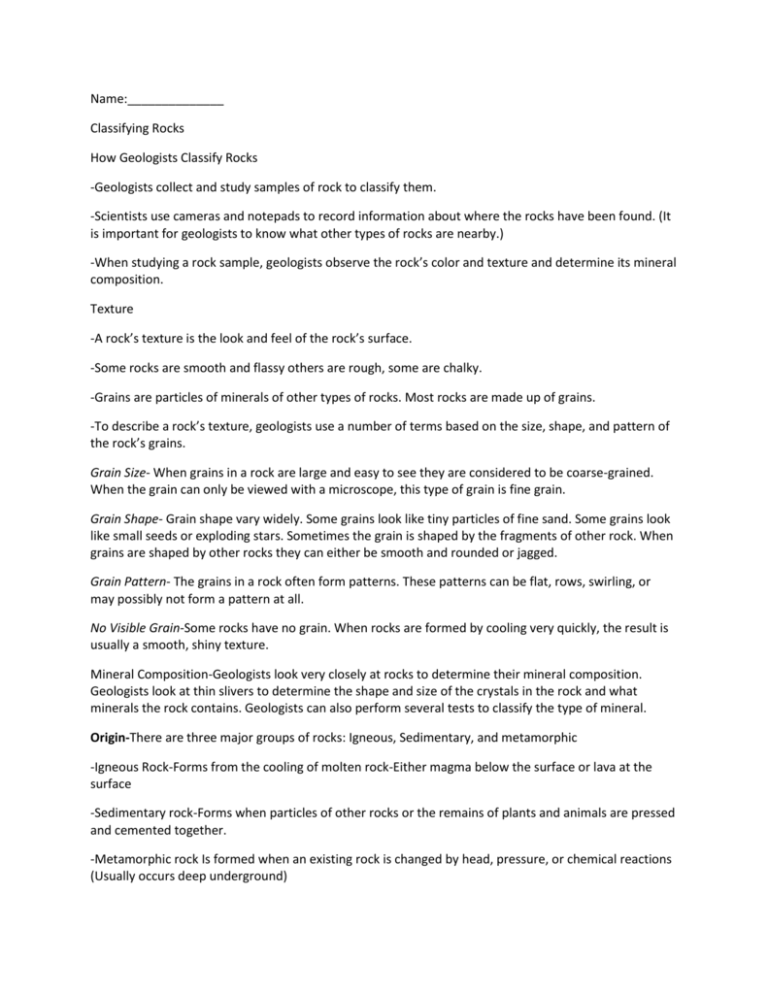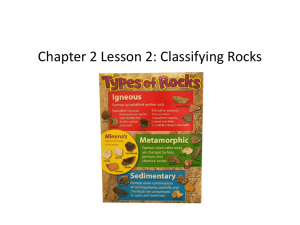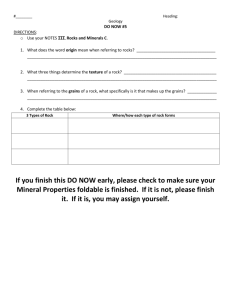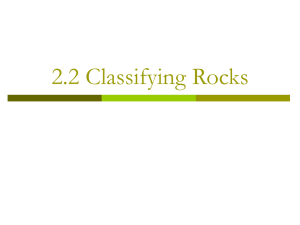Name: Classifying Rocks How Geologists Classify Rocks
advertisement

Name:______________ Classifying Rocks How Geologists Classify Rocks -Geologists collect and study samples of rock to classify them. -Scientists use cameras and notepads to record information about where the rocks have been found. (It is important for geologists to know what other types of rocks are nearby.) -When studying a rock sample, geologists observe the rock’s color and texture and determine its mineral composition. Texture -A rock’s texture is the look and feel of the rock’s surface. -Some rocks are smooth and flassy others are rough, some are chalky. -Grains are particles of minerals of other types of rocks. Most rocks are made up of grains. -To describe a rock’s texture, geologists use a number of terms based on the size, shape, and pattern of the rock’s grains. Grain Size- When grains in a rock are large and easy to see they are considered to be coarse-grained. When the grain can only be viewed with a microscope, this type of grain is fine grain. Grain Shape- Grain shape vary widely. Some grains look like tiny particles of fine sand. Some grains look like small seeds or exploding stars. Sometimes the grain is shaped by the fragments of other rock. When grains are shaped by other rocks they can either be smooth and rounded or jagged. Grain Pattern- The grains in a rock often form patterns. These patterns can be flat, rows, swirling, or may possibly not form a pattern at all. No Visible Grain-Some rocks have no grain. When rocks are formed by cooling very quickly, the result is usually a smooth, shiny texture. Mineral Composition-Geologists look very closely at rocks to determine their mineral composition. Geologists look at thin slivers to determine the shape and size of the crystals in the rock and what minerals the rock contains. Geologists can also perform several tests to classify the type of mineral. Origin-There are three major groups of rocks: Igneous, Sedimentary, and metamorphic -Igneous Rock-Forms from the cooling of molten rock-Either magma below the surface or lava at the surface -Sedimentary rock-Forms when particles of other rocks or the remains of plants and animals are pressed and cemented together. -Metamorphic rock Is formed when an existing rock is changed by head, pressure, or chemical reactions (Usually occurs deep underground)








